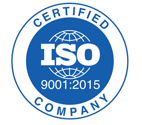The European Medical Device Regulation (EU MDR) continues to pose challenges for medical device manufacturers as they strive for compliance. With evolving regulatory expectations, stricter requirements, and increased scrutiny from Notified Bodies, navigating EU MDR in 2025 demands strategic planning and proactive risk management. This blog outlines the most common pitfalls medical device companies encounter and offers practical solutions to avoid compliance setbacks.
1. Incomplete or Inaccurate Technical Documentation
Pitfall: One of the most frequent reasons for delays or rejections under EU MDR is inadequate technical documentation. Many manufacturers fail to provide comprehensive evidence of device safety and performance, leading to non-compliance.
How to Avoid It:
-
Ensure all documentation aligns with Annex II and III of EU MDR.
-
Maintain a well-structured Technical File or Design Dossier with clear justifications and traceability.
-
Regularly update documents to reflect post-market data and risk management revisions.
2. Underestimating Post-Market Surveillance (PMS) Requirements
Pitfall: Companies often overlook the expanded PMS obligations, including Periodic Safety Update Reports (PSURs) and Post-Market Clinical Follow-up (PMCF) requirements, resulting in compliance gaps.
How to Avoid It:
-
Establish a robust PMS plan with defined responsibilities.
-
Conduct PMCF studies to validate long-term safety and performance.
-
Integrate real-world data collection and analysis to fulfill reporting requirements.
3. Lack of Sufficient Clinical Evidence
Pitfall: EU MDR demands higher levels of clinical evidence, and many manufacturers struggle to meet these expectations, especially for legacy devices previously approved under MDD.
How to Avoid It:
-
Conduct comprehensive clinical evaluations following MEDDEV 2.7/1 Rev. 4 and MDCG guidance.
-
Leverage published literature, if applicable, but supplement it with new clinical investigations where necessary.
-
Align with Notified Body expectations early to address potential evidence gaps.
4. Delays in Notified Body Engagement
Pitfall: With a limited number of designated Notified Bodies under MDR, companies face long wait times for assessments, leading to delays in market approvals.
How to Avoid It:
-
Engage with a Notified Body as early as possible in the certification process.
-
Prepare documentation in advance to streamline the review process.
-
Consider working with multiple Notified Bodies to mitigate risks associated with delays.
5. Misclassification of Medical Devices
Pitfall: Misinterpreting MDR classification rules can result in incorrect conformity assessment routes, leading to regulatory setbacks.
How to Avoid It:
-
Review Annex VIII of EU MDR to determine the correct classification.
-
Consult with regulatory experts or Notified Bodies if classification uncertainties arise.
-
Stay updated on MDCG guidance documents that clarify classification rules.
6. Ignoring UDI and EUDAMED Requirements
Pitfall: Many companies fail to comply with Unique Device Identification (UDI) and EUDAMED database requirements, delaying market access.
How to Avoid It:
-
Implement a robust UDI assignment and labeling strategy in compliance with MDR deadlines.
-
Ensure timely registration of devices and manufacturers in EUDAMED.
-
Monitor regulatory updates for EUDAMED’s full operational rollout.
7. Insufficient Quality Management System (QMS) Updates
Pitfall: Companies with ISO 13485 certification may assume their QMS is automatically MDR-compliant, which is not always the case.
How to Avoid It:
-
Align your QMS with MDR-specific requirements, including risk management, PMS, and vigilance.
-
Conduct internal audits to identify and correct gaps.
-
Train personnel on MDR requirements to ensure company-wide compliance.
8. Overlooking Economic Operator Obligations
Pitfall: Many manufacturers fail to recognize the expanded responsibilities for importers, distributors, and Authorized Representatives under MDR.
How to Avoid It:
-
Ensure contracts clearly define roles and responsibilities of all economic operators.
-
Maintain traceability records and agreements to facilitate compliance.
-
Regularly audit distributors and importers to verify compliance with MDR obligations.
Compliance with EU MDR in 2025 remains a complex and evolving challenge. However, by addressing these common pitfalls proactively, medical device manufacturers can streamline their regulatory processes, reduce delays, and maintain market access. Investing in expert guidance, strengthening post-market surveillance, and staying ahead of regulatory changes will be key to achieving and maintaining EU MDR compliance in the years ahead.
If you need any assistance with respect to Quality or Regulatory Compliance matters, please contact us at PRP. We understand how challenging it can be to maintain compliance while managing your day-to-day operations. We have a large, experienced team of QA/RA consultants throughout the country who can seamlessly integrate with your team to fill any gaps in expertise or bandwidth, ensuring you stay on track with your compliance goals. We would welcome the opportunity to work together!



